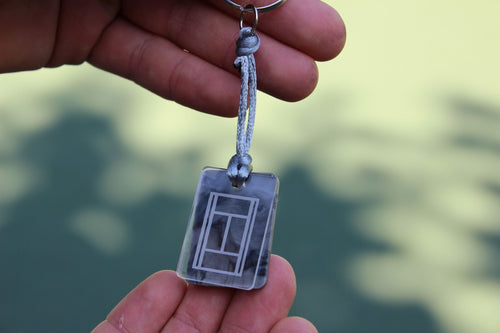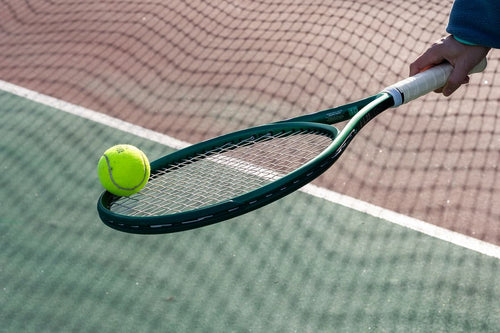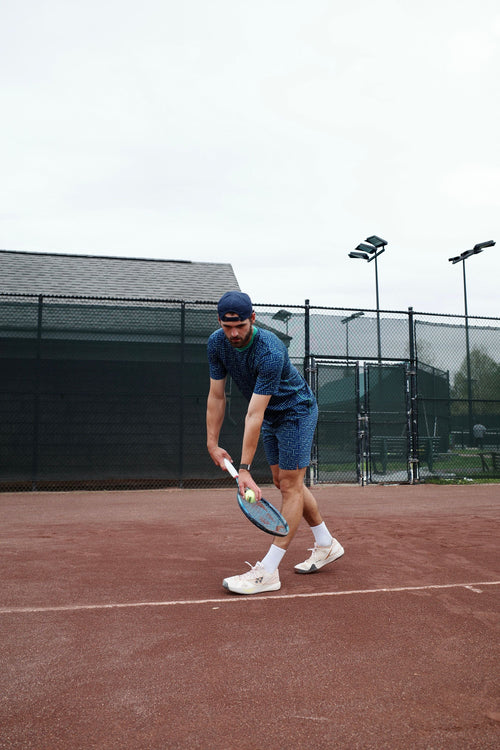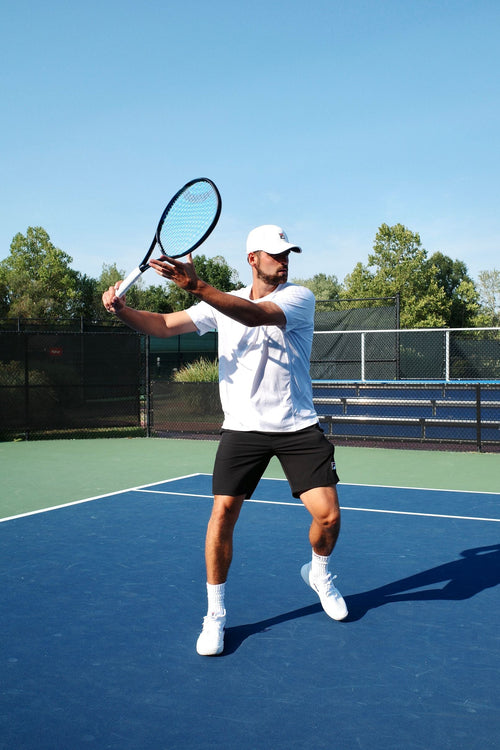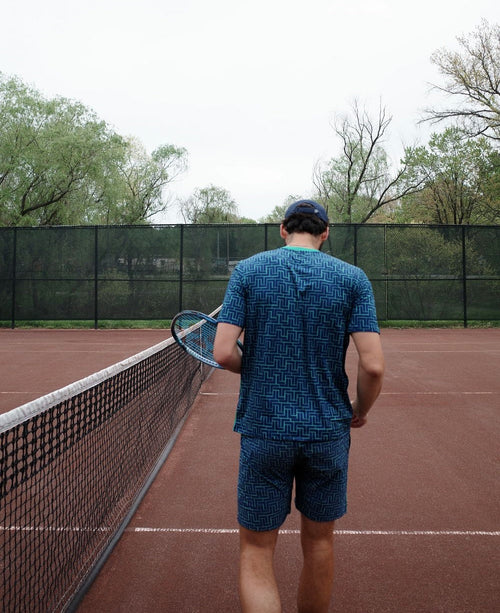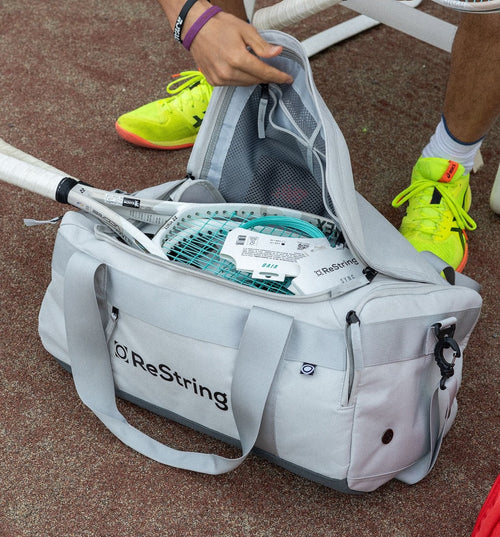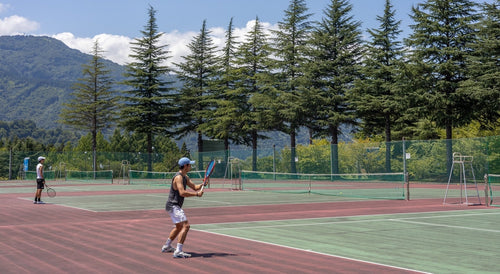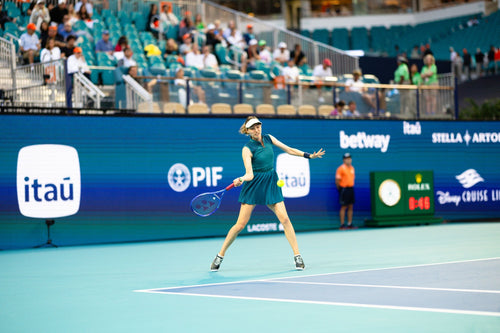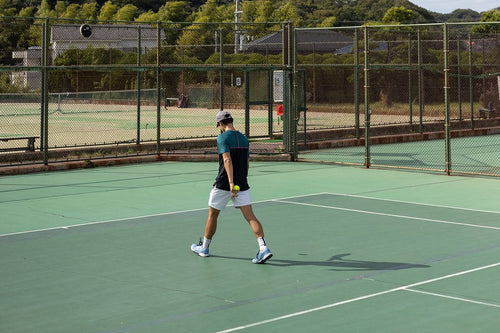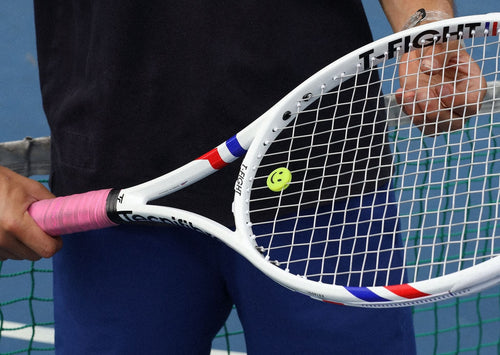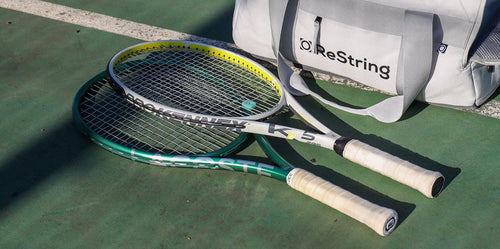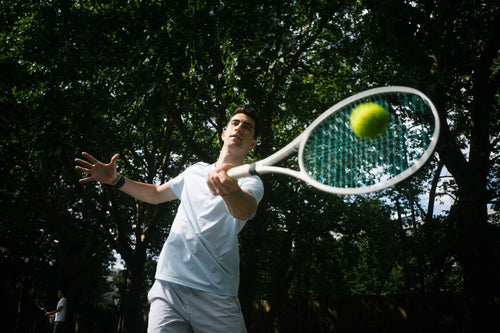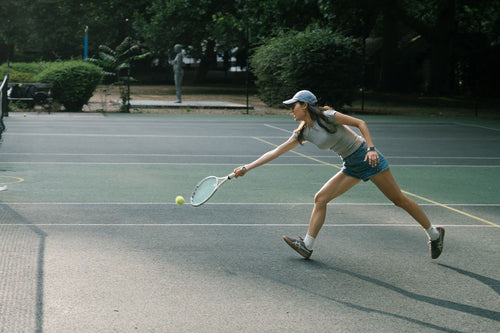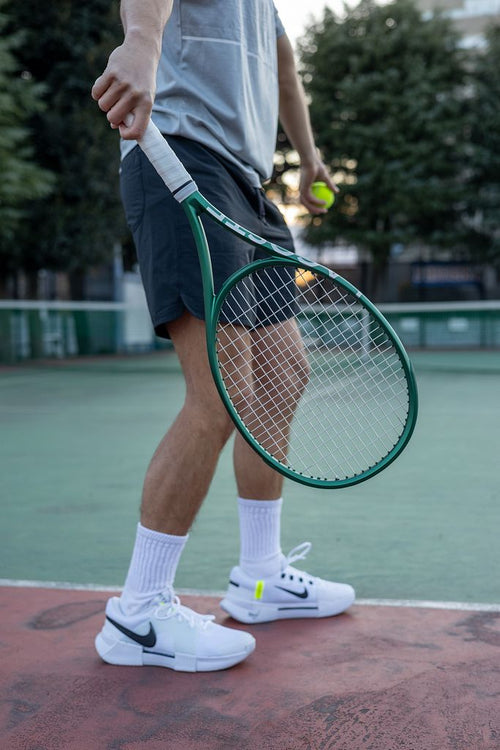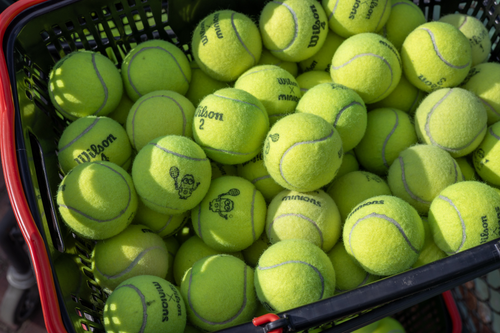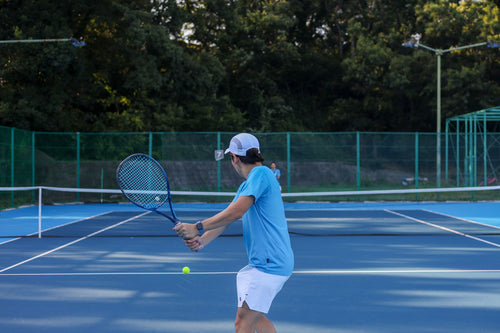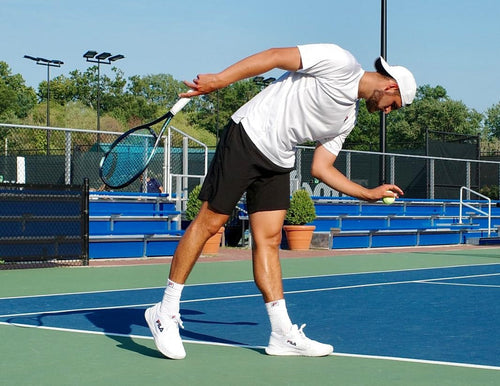The Historical Evolution of Tennis Rackets
Juan
Tennis rackets have transformed from simple wooden paddles into precision-engineered tools. Understanding their evolution helps you appreciate what you hold in your hand on court today.
Below we’ll look at the journey from wooden frames to carbon fiber composites and explain how racket innovation has always moved in tandem with string technology.
The Wooden Era (Pre-1970s)
Ash Wood Rackets
Lawn tennis began in the 1870s in the UK with rackets made from solid ash wood. Manufacturers chose ash for its unique combination of strength and flexibility. The wood could be bent into the required oval shape while maintaining enough toughness to withstand repeated ball impacts.
Laminated Wood Rackets
This lasted a long time until the 1940s brought a significant improvement in racket technology through laminated wood construction. Instead of using a single piece of solid wood, manufacturers began bonding multiple thin veneers together. This layering technique created frames that were more flexible, more durable, and more consistent from racket to racket.
Two rackets dominated this pre-1970s era and remain iconic today. The Dunlop Maxply Fort used by Rod Laver and John McEnroe, and the Wilson Jack Kramer used by Billie Jean King and Arthur Ashe. Both models represented the pinnacle of wooden racket engineering at the time.
Despite being iconic, these wooden rackets came with serious limitations.
They typically weighed around 500 grams. Their small heads produced tiny sweet spots that demanded extremely precise technique. The wood also used to warp when exposed to moisture, forcing players to use presses to maintain the shape of the frame between matches.
The Metal Revolution (1950s-1970s)
Around the same time as laminated wooden frames, manufacturers were experimenting with metal frames to try and fix some of the issues with wooden rackets. However, these largely failed. The metal damaged strings on impact and transmitted harsh vibrations that made the rackets very uncomfortable to use.
Steel Rackets
René Lacoste changed everything in 1957 with a revolutionary steel racket design.
His patent solved the stringing problem by using a wire-loop system to hold the strings in place without direct metal-to-string contact. Wilson acquired the rights and released the Wilson T2000, which became legendary after Jimmy Connors used it to win Wimbledon in 1974.
Aluminum Rackets
Aluminum frames arrived next and enabled the first commercially successful oversized racket from Prince. The larger head size gave players a much bigger sweet spot, which means more power and more forgiveness on off-center hits.
This caused an increase in the popularity of tennis as recreational players could now generate respectable pace without perfect technique.
However, the rise of oversized frames caused the ITF to impose limits on racket dimensions in 1981 to prevent technology from changing the fundamental nature of the game.
The Composite Era (1980s-1990s)
Carbon Fiber Rackets
Carbon fiber composites arrived in the late 1980s and completely changed racket design again.
These offered a better strength-to-weight ratio compared to both wood and metal. Early composite rackets like Head Prestige and Dunlop Max 200G were lighter, stiffer, and more powerful while also improving shock absorption.
Widebody Rackets
The late 1980s saw the introduction of widebody rackets with larger cross-sections to increase frame stiffness even further. Wilson developed Hammer technology around the same time, moving weight toward the racket head to boost power.
These wide-body designs influenced the powerful playing styles that emerged in the 1990s. Serena Williams represents perhaps the most notable example of a player who dominated with this new equipment.
This composite era overlapped with the wooden era in an interesting way. When Bjorn Borg attempted his unsuccessful comeback in 1991, he continued using wooden rackets while facing opponents with newer metal and composite frames. The contrast highlighted just how far racket technology had come in such a short time.
The Modern Era (2000s-Present)
Control Rackets
While material experiments had slowed, the early 2000s brought a shift toward control-oriented rackets. The Federer and Murray era coincided with increased physicality in professional tennis, partly driven by the widespread adoption of polyester strings.
Manufacturers responded with near-universal carbon fiber layups featuring precise engineering for specific playing characteristics. Head sizes became standardized around 95 to 100 square inches for advanced players and 100 to 110 square inches for game-improvement models.
Power and Spin Rackets
From the 2010s onward, power-oriented frames made a comeback, though not quite to the extreme levels of the 1990s. These modern designs sit somewhere in between, optimized primarily for spin while still offering good control and power.
The Babolat Aero, Pure Drive, and Head Radical exemplify this philosophy. Players like Rafael Nadal, Carlos Alcaraz, and Jannik Sinner all use these hybrid-form rackets.
Spin-oriented designs feature open string patterns, aerodynamic beams, and enhanced grommet systems that allow strings to move more freely. This movement creates better snapback for increased spin potential.
Modern strings have evolved alongside these racket innovations. For examples, Zero was designed specifically for this spin-focused style of play, delivering the power and snapback that modern frames are engineered to maximize.
Advanced dampening technology using elastomers and composite materials have also made these powerful frames more comfortable than ever. You can swing aggressively without the harsh feedback that plagued earlier powerful rackets.
Sustainability Considerations
The 2020s have introduced sustainability considerations into racket manufacturing. For examples, Wilson now uses recycled plastic where possible in racket components.
As a string brand, we're contributing to this movement through better packaging and recycled string materials that don't compromise performance.
Conclusion
Tennis rackets have evolved from heavy wooden objects to precision-engineered carbon fiber tools. Modern rackets work hand-in-hand with string technology to give you the performance you need.
If you're playing with spin-oriented frames, Zero delivers the snapback these rackets were built for. If you’re using a precision-focused frame, Sync provides the control you need. And if sustainability matters to you, Vivo brings recycled materials and tour-level performance.
Racket evolution continues, but the core principle remains the same. Better equipment helps you play better tennis.
About the Author: Juan is the co-founder of ReString. He was born in Argentina, raised in Japan, and moved to the US to pursue college tennis. He now plays as an ATP & WTA hitting partner.

